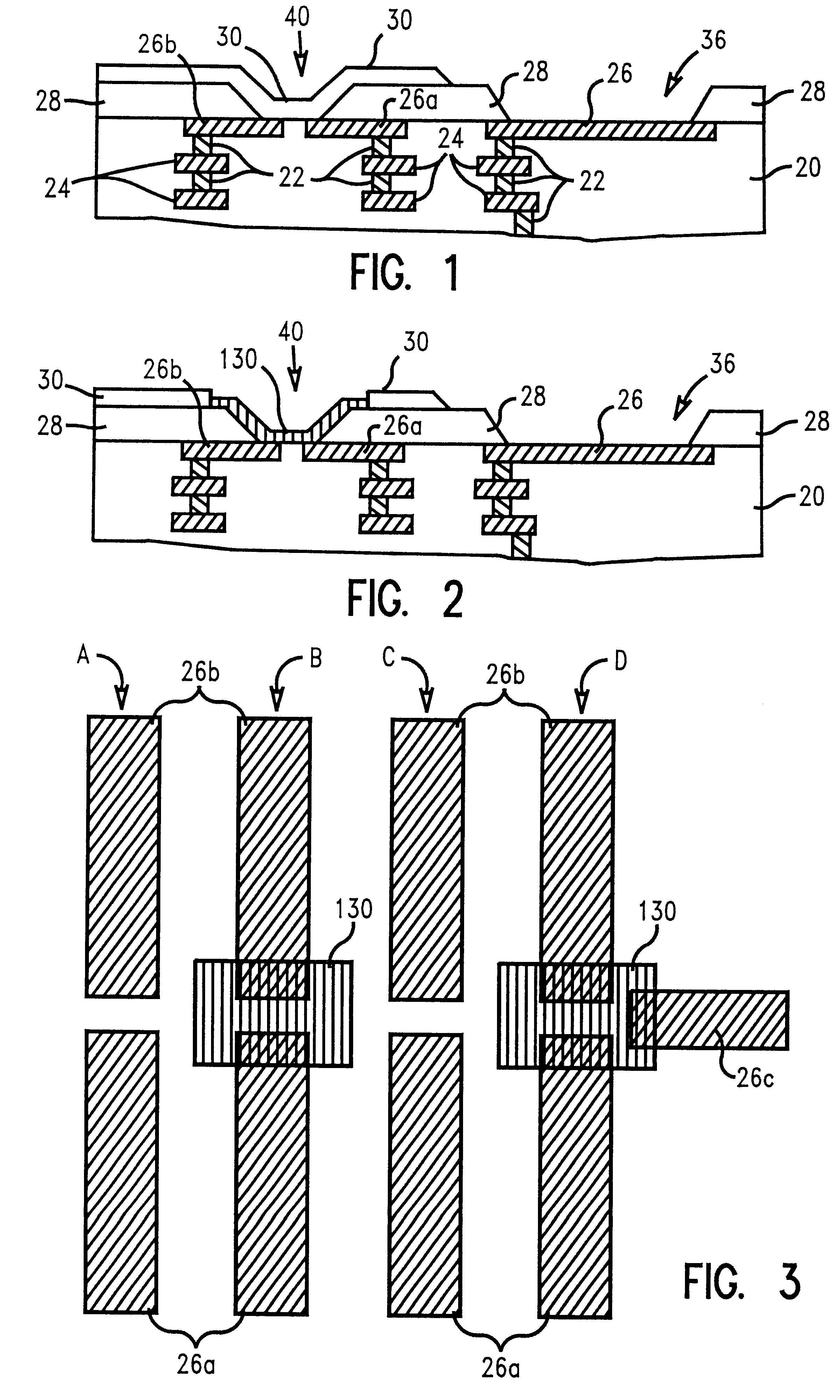Antifuse for use with low k dielectric foam insulators
a foam insulator and dielectric foam technology, applied in the field of fuse elements, can solve the problems of high electrical resistance, void compression, and interruption of line continuity
- Summary
- Abstract
- Description
- Claims
- Application Information
AI Technical Summary
Benefits of technology
Problems solved by technology
Method used
Image
Examples
Embodiment Construction
An example of how the fuse structure of the present invention may be formed is provided below.
Initially, a nanopore glass is deposited as the underlayer dielectric. If desired, a thin layer of full density silicon dioxide, silicon nitride, or the like can be deposited as a cap over the nanopore glass layer. Using conventional resist techniques, trenches are etched in the glass to define the wiring pattern, and the resist is then stripped. Using a damascene process, the trenches are filled with one or more metals, e.g. copper, to define the conduction wires. Using chemical mechanical polishing, the unwanted metal is removed from the field areas. A nanopore glass is then deposited as the overcoat dielectric. If desired, a thin layer of full denisity silicon dioxide., silicon nitride, or the like can be deposited as a barrier under the nanopore glass, and a second thin layer of full density silicon dioxide, silicon nitride, or the like can be deposited as a cap over the nanopore glass....
PUM
 Login to View More
Login to View More Abstract
Description
Claims
Application Information
 Login to View More
Login to View More - R&D
- Intellectual Property
- Life Sciences
- Materials
- Tech Scout
- Unparalleled Data Quality
- Higher Quality Content
- 60% Fewer Hallucinations
Browse by: Latest US Patents, China's latest patents, Technical Efficacy Thesaurus, Application Domain, Technology Topic, Popular Technical Reports.
© 2025 PatSnap. All rights reserved.Legal|Privacy policy|Modern Slavery Act Transparency Statement|Sitemap|About US| Contact US: help@patsnap.com



